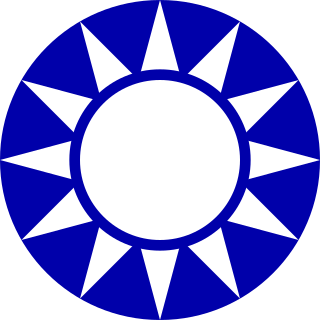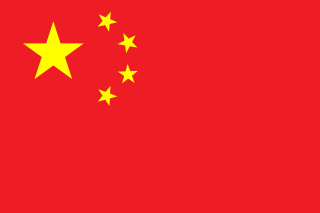 W
WThe Blue Shirts Society (藍衣社), also known as the Society of Practice of the Three Principles of the People, the Spirit Encouragement Society and the China Reconstruction Society, was a secret ultranationalist faction that modeled Italian fascists in the Kuomintang.
 W
WThe Second Sino-Japanese War (1937–1945) was a military conflict that was primarily waged between the Republic of China and the Empire of Japan. The war made up the Chinese theater of the wider Pacific Theater of the Second World War. The beginning of the war is conventionally dated to the Marco Polo Bridge Incident on 7 July 1937, when a dispute between Japanese and Chinese troops in Peking escalated into a full-scale invasion. This full-scale war between the Chinese and the Empire of Japan is often regarded as the beginning of World War II in Asia. In 2017 the Ministry of Education in the People's Republic of China decreed that the term "eight-year war" in all textbooks should be replaced by "fourteen-year war", with a revised starting date of 18 September 1931 provided by the Japanese invasion of Manchuria. According to historian Rana Mitter, historians in China are unhappy with the blanket revision, and the Republic of China did not consider itself to be continuously at war with Japan over these six years. The Tanggu Truce of 1933 officially ended the earlier hostilities in Manchuria while the He-Umezu Agreement of 1935 acknowledged the Japanese demands to put an end to all anti-Japanese organizations in China.
 W
WThis article lists the results for the China national football team between 1913 and 1949. Scores are listed with the Chinese score first, followed by the opponents' score.
 W
WThe Ding Xian Experiment during the Republican period of Chinese history was a project in Rural Reconstruction sponsored by James Yen's Mass Education Movement (MEM) 中华平民教育促进会 in Ding Xian, Hebei, some 200 miles south of Beijing.
 W
WZhang Dinghuang ; 1895–1986), also known as Zhang Fengju was a Chinese-American antiquarian, linguist, literary critic, poet, and translator. He was born in Nanchang and an expert in antique manuscripts. Zhang was a supporting but key figure of the rich 20th century Chinese literary movements.
 W
WThe National Revolutionary Army, sometimes shortened to Revolutionary Army (革命軍) before 1928, and as National Army (國軍) after 1928, was the military arm of the Kuomintang from 1925 until 1947 in the Republic of China. It also became the regular army of the ROC during the KMT's period of party rule beginning in 1928. It was renamed the Republic of China Armed Forces after the 1947 Constitution, which instituted civilian control of the military.
 W
WThe Nationalist government, officially the National Government of the Republic of China, also known as Second Republic of China but most commonly known simply as the Republic of China, refers to the government of the Republic of China between 1 July 1925 and 20 May 1948, led by the Kuomintang. The name derives from the Kuomintang's translated name "Nationalist Party".
 W
WThe Amdo- Ma clique conflicts (1917–1949) were a series of military campaigns against unconquered Amchok and Ngolok (Golok) tribal Tibetan areas of Qinghai (Amdo), undertaken by two Hui commanders, Gen. Ma Qi and Gen. Ma Bufang, on behalf of the Beiyang and Kuomintang governments of the Republic of China. The campaigns lasted between 1917 and 1949.
 W
WThe Rare Book Preservation Society (文献保存同志会) was founded in 1940 by Zheng Zhenduo (郑振铎), Zhang Shouyong (张寿镛), He Bingsong (何炳松), Zhang Yuanji (张元济), and Zhang Fengju (张凤举) for the purpose of secretly acquiring and preserving rare books and manuscripts in the Shanghai Jiangnan region. These cultural assets have been accumulated by a number of famous private libraries some over 1,000 years.
 W
WThe Second Sino-Japanese War (1937–1945) was a military conflict that was primarily waged between the Republic of China and the Empire of Japan. The war made up the Chinese theater of the wider Pacific Theater of the Second World War. The beginning of the war is conventionally dated to the Marco Polo Bridge Incident on 7 July 1937, when a dispute between Japanese and Chinese troops in Peking escalated into a full-scale invasion. This full-scale war between the Chinese and the Empire of Japan is often regarded as the beginning of World War II in Asia. In 2017 the Ministry of Education in the People's Republic of China decreed that the term "eight-year war" in all textbooks should be replaced by "fourteen-year war", with a revised starting date of 18 September 1931 provided by the Japanese invasion of Manchuria. According to historian Rana Mitter, historians in China are unhappy with the blanket revision, and the Republic of China did not consider itself to be continuously at war with Japan over these six years. The Tanggu Truce of 1933 officially ended the earlier hostilities in Manchuria while the He-Umezu Agreement of 1935 acknowledged the Japanese demands to put an end to all anti-Japanese organizations in China.
 W
WThe Second United Front was the alliance between the Chinese Nationalist Party and the Chinese Communist Party (CCP) to resist the Japanese invasion during the Second Sino-Japanese War, which suspended the Chinese Civil War from 1937 to 1941.
 W
WThe Sino-Tibetan War was a war that began in 1930 when the Tibetan Army under the 13th Dalai Lama invaded Xikang and Yushu in Qinghai in a dispute over monasteries. Ma clique warlord Ma Bufang secretly sent a telegram to Sichuan warlord Liu Wenhui and the leader of the Republic of China, Chiang Kai-shek, suggesting a joint attack on the Tibetan forces. Their armies rapidly overwhelmed and defeated the Tibetan Army.